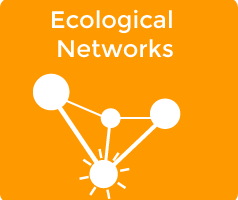The Great Salt Lake is an interesting ecosystem to study due to the organisms that inhabit this saline environment and due to the impact humans have had on this ecosystem. In 1952, a causeway was built to replace an existing railroad trestle. Unlike, the previous trestle, the new causeway does not allow circulation of water between the two sides of the Great Salt Lake.
Advance preparation and materials required for each lesson: Lesson Description Preparation and materials Lesson 1 Building cell phone network manually on paper Lesson 1 Prep.doc Lesson 2 Cytoscape analysis of cell phone network Lesson 2 Prep.doc Lesson 3 Researching background on extremophiles Lesson 3 Prep.doc Lesson 4 Introduction to the GSL case study; hypothesis generation […]
This 2 week curriculum module gives middle and high school students an introduction to 1) the concept of systems (aka networks), 2) using software tools to analyze networks, and 3) using both experimentation and networks as a way to define hypotheses and test outcomes.
The development of network concepts for students begins with a highly interactive inquiry into cell phone networks. Cell phones serve as a handy knowledge base on which to develop understanding. Each cell phone represents a node, and each phone’s address book represents an edge, or the calling relationships between cell phones.
Energy flows in one direction and is stored in matter.
Trophic levels indicate an organism’s position on a food chain. The amount of available energy decreases as it progresses through food chains; the total amount of available energy in a trophic level is less in higher trophic levels than in lower trophic levels.
An increase in salinity allows for an increase in halobacteria population size. The reliability of data increases with an increase in the size of the data pool/set. To draw reliable conclusions, multiple trials/replicates should be performed.
Halobacterium are extremophiles thriving in high saline environments. An ecological disturbance in a single abiotic or biotic factor could affect an entire ecosystem. Natural events and human activities affect the Earth’s capacity to sustain biological diversity. Spectrophotometers are used to measure cell density.
The students will be introduced to two different pieces of equipment, the micropipette and the spectrophotometer. Both of these instruments will be used in a future investigation.
The students will be presented with a real life example of an event that affected the Great Salt Lake ecosystem – the building of a causeway. Based on observations of this phenomenon, students will generate hypotheses about factors affecting the growth of one prominent organism in this ecosystem, Halobacterium.








